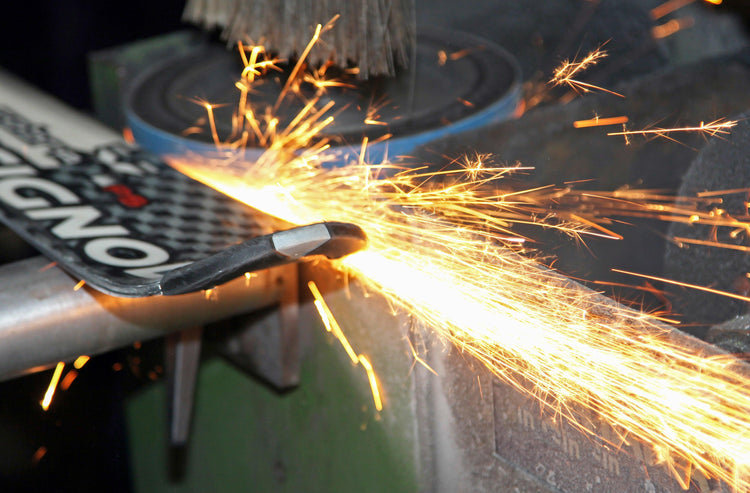Our Belt Sander ES 2000PLUS is of course not the only electric edge grinder on the ski tuning market. There are also several other devices marketed for these purposes. We took a look at the type of disc sanders and compared the results when sanding the side edge.
Disc Sander
Disc sanders sand radially to the edge using a sanding disc. That means they sand the edge with circular movements, causing the sanding disc to move out and back in relative to the edge. We took a closer look at the sanding result under the microscope. Here is a shot of it:

Due to the circular movements, a slight burr forms on the ski or snowboard edge, which can be seen in this image.
To remove this burr, a diamond file should be used after processing with the disc sander. Also, care should be taken to keep the device always moving, as otherwise it can happen that a step is sanded into the edge.
We also measured the surface value as the average roughness depth. For the average roughness depth (Rz), we divided the surface of the edge into five areas and calculated the heights and depths for each. From this, we determined the mean value, which is 2.7 μm.
Belt Sander
For comparison, we also took a closer look at our belt sander ES 2000.
The difference in the sanding process is that the edges are sanded using a sanding belt. This process takes place in parallel, meaning the belt moves lengthwise along the edge. This movement also prevents any step from being sanded into the edge if one lingers a bit longer on one spot of the edge. We also placed the ski under the microscope here.

The sanding result shown here shows no burr formation. Nothing needs to be refined after this sanding process.
Here too, we measured the surface value as the average roughness depth. The result with the belt sander is 0.5 μm.
Conclusion:
Both the roughness depth and burr formation are lower when using the belt sander in our measurements. The ES 2000 is heavier in weight but forgives application errors, which makes operation easier.
Note:
Both devices were used with standard sanding belts/discs, so no advantage arises from a finer grit. The results were also not altered afterwards. Only the brightness was adjusted in the images.
